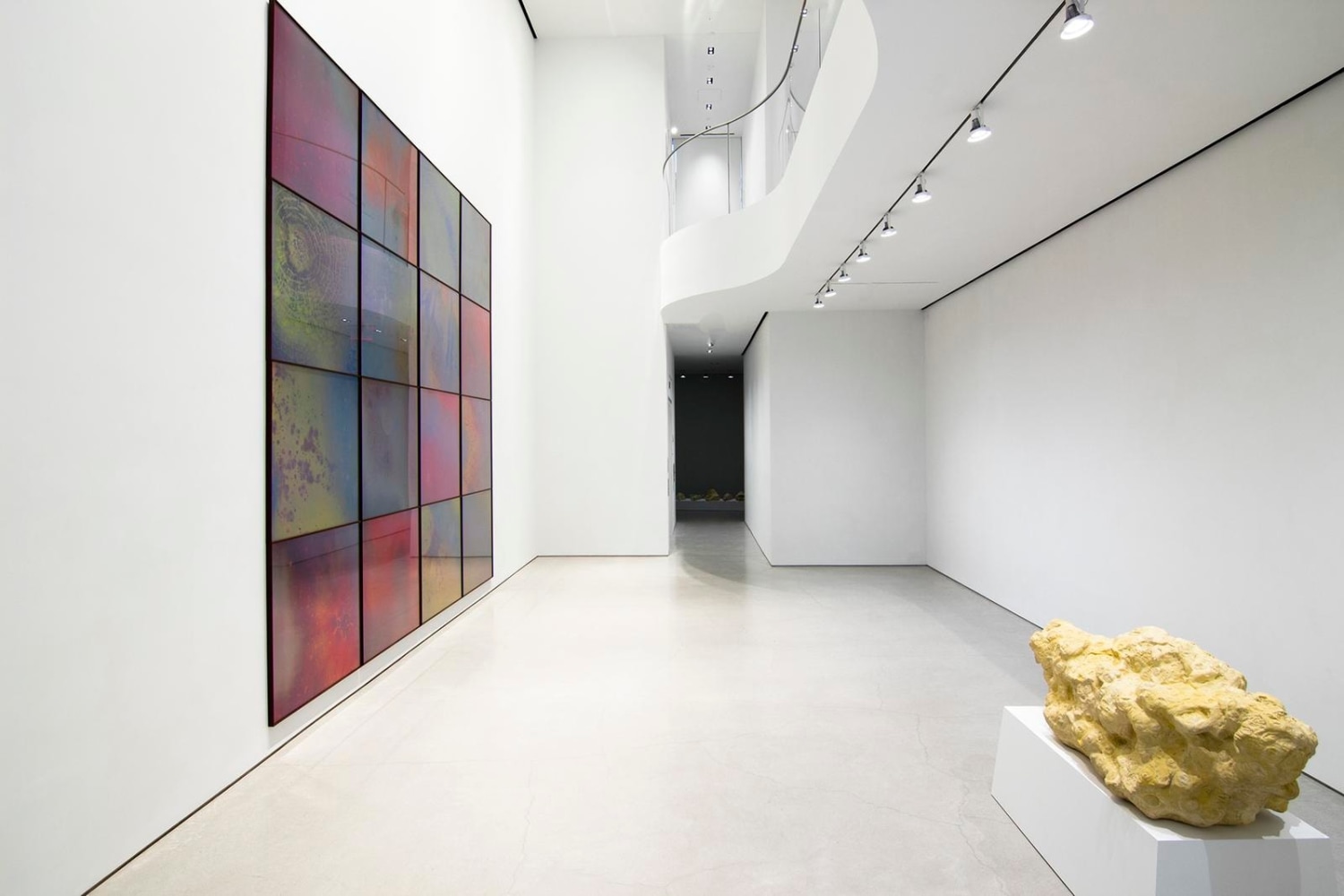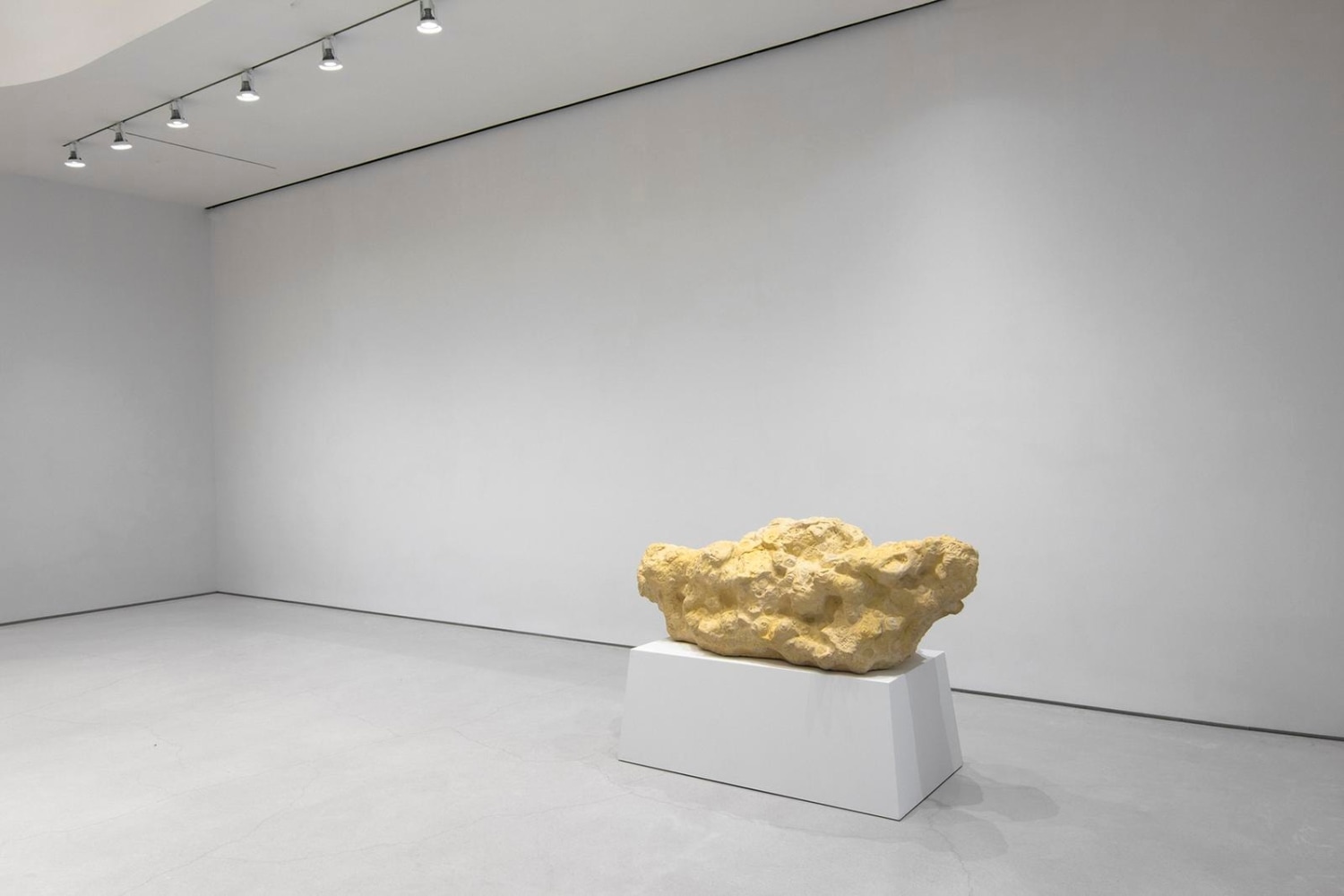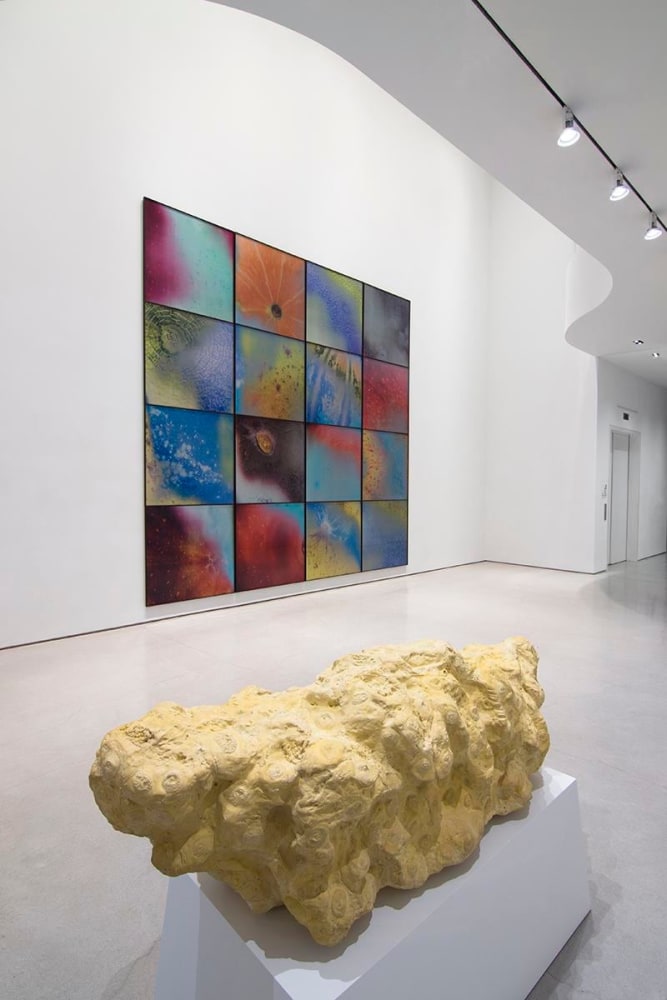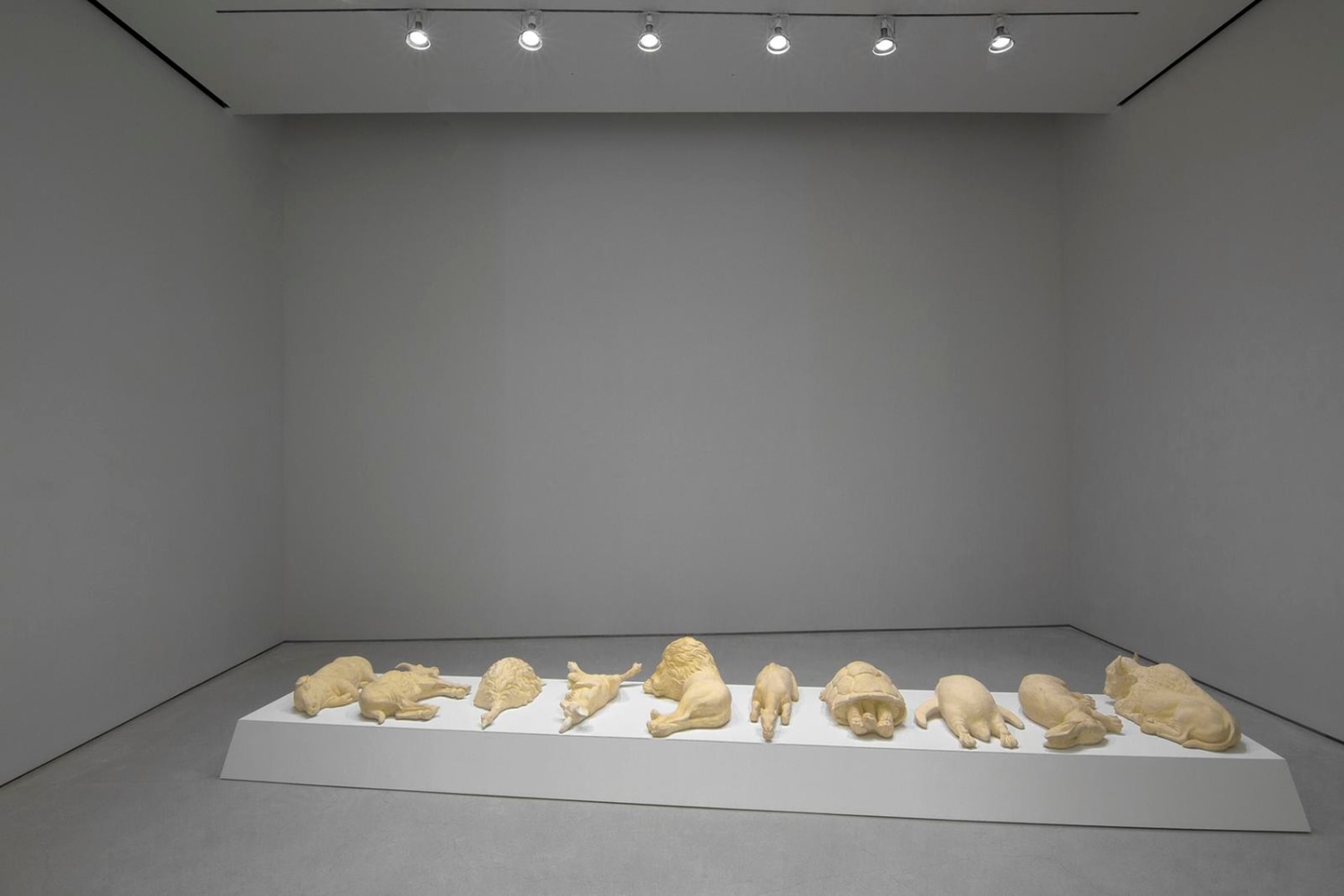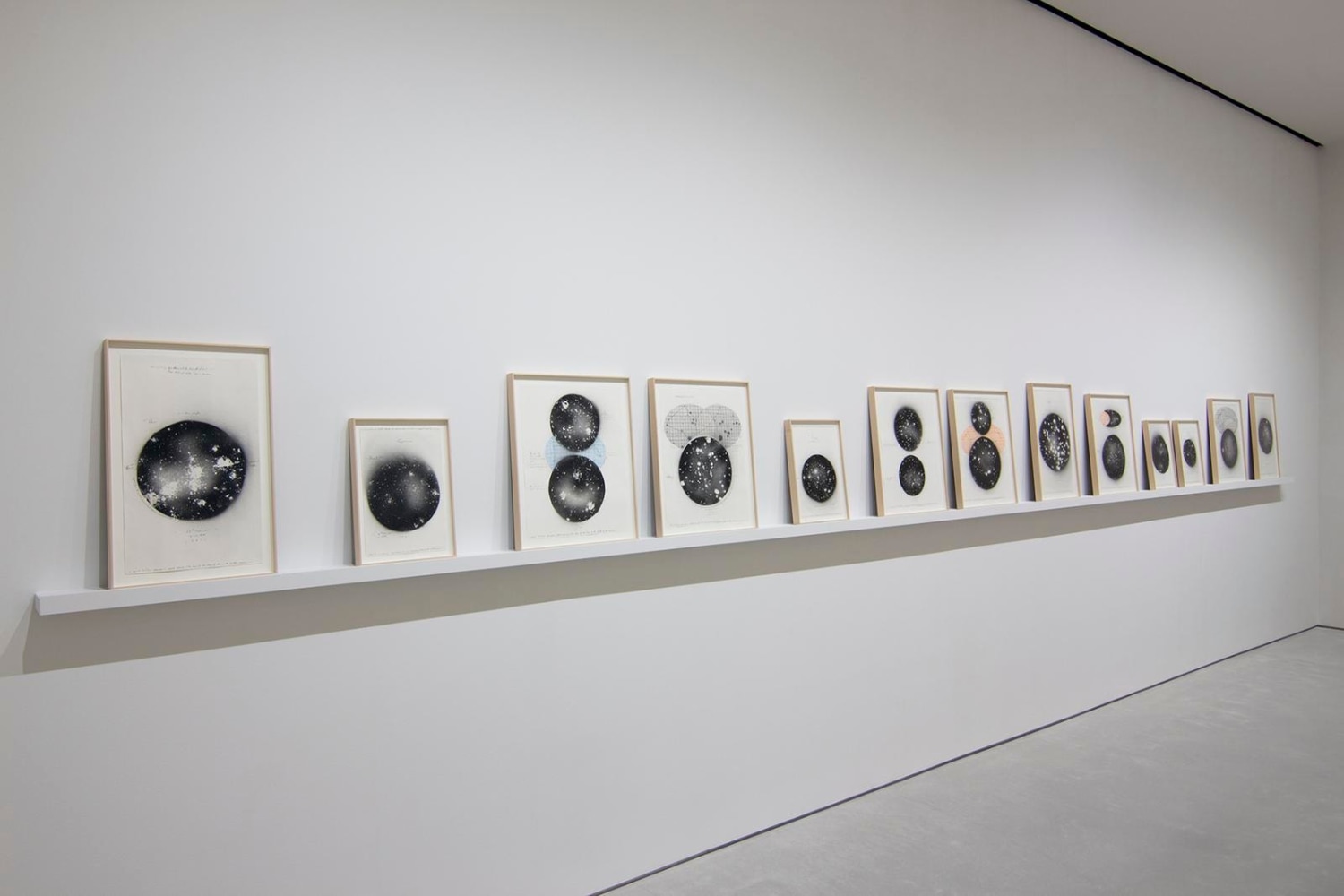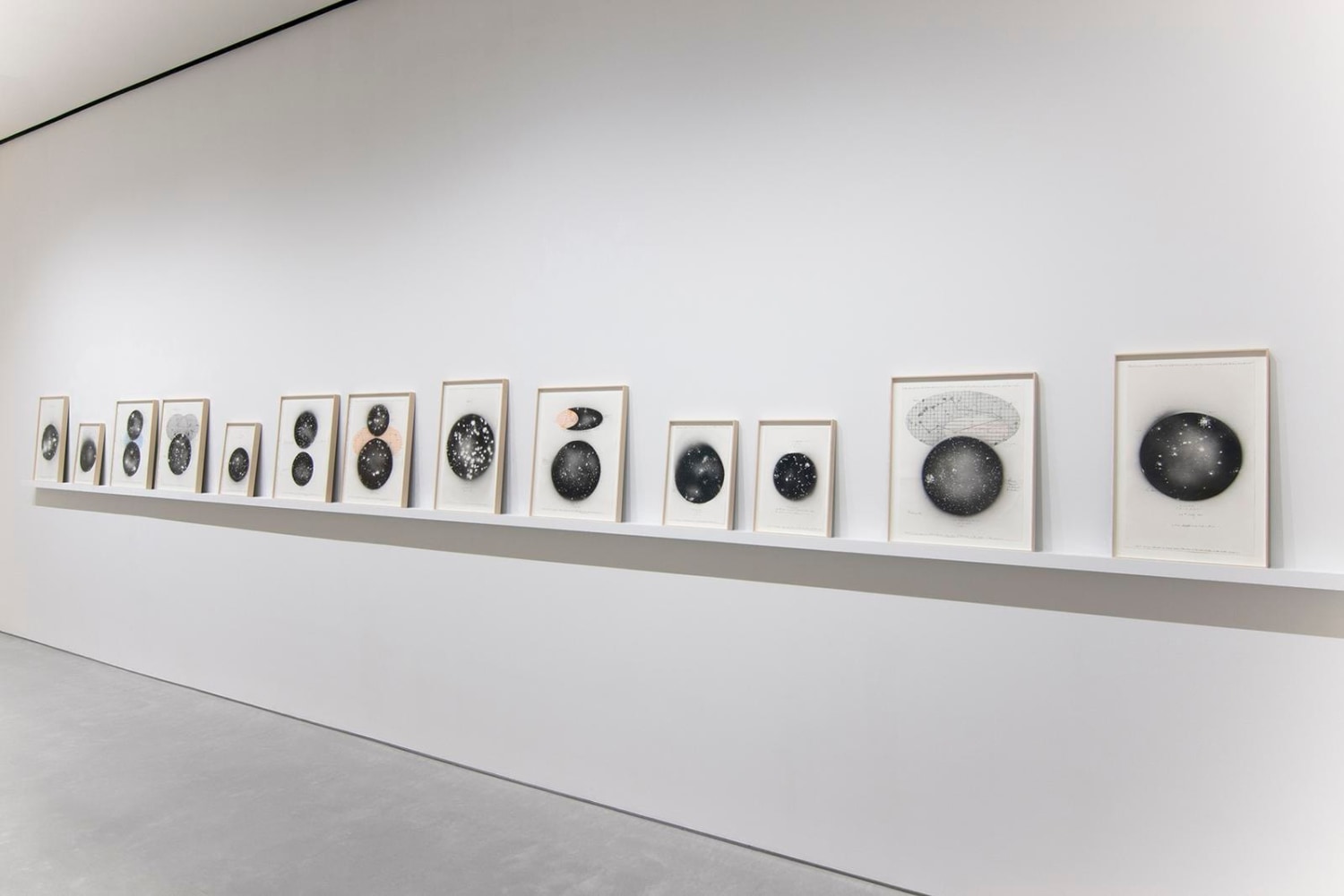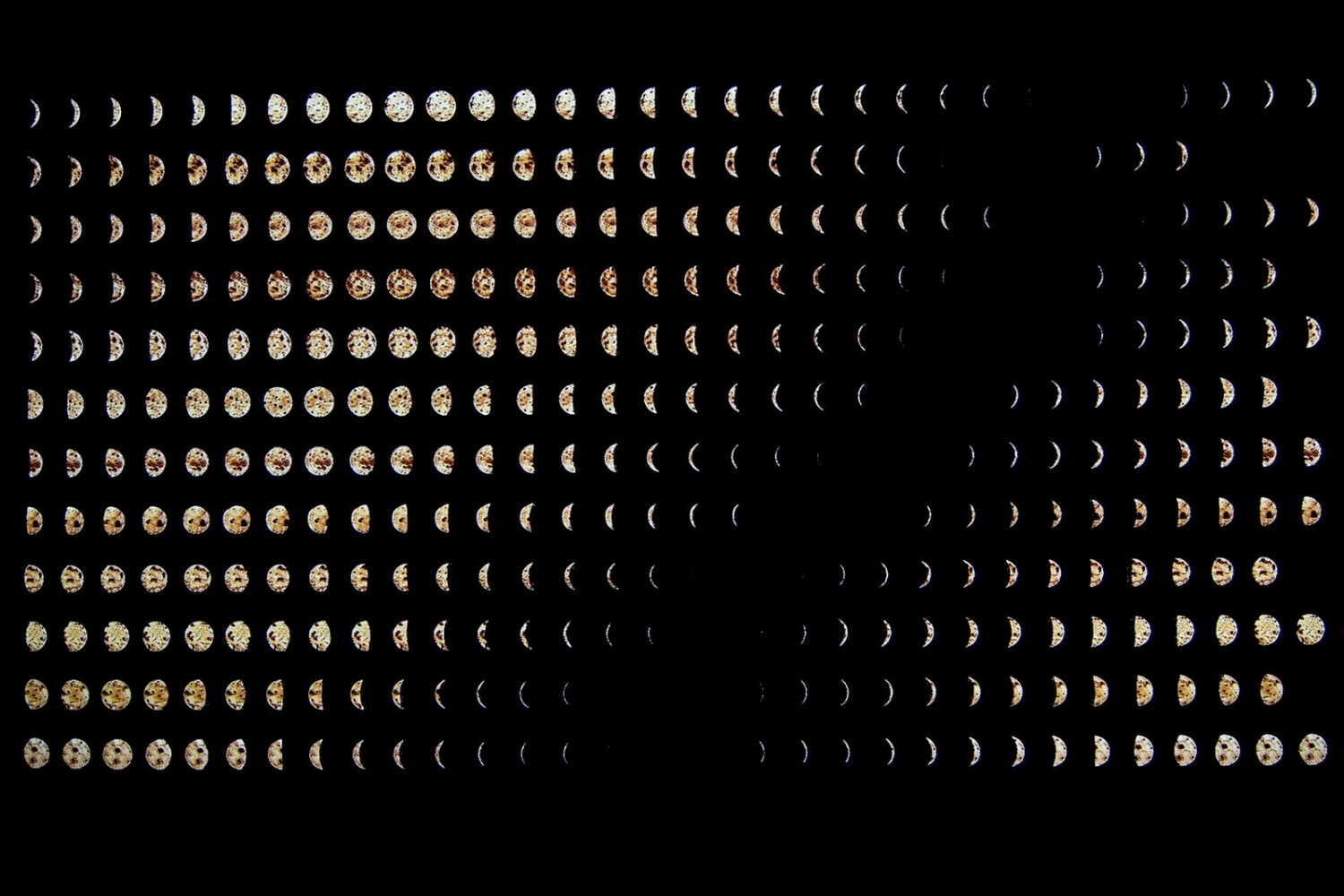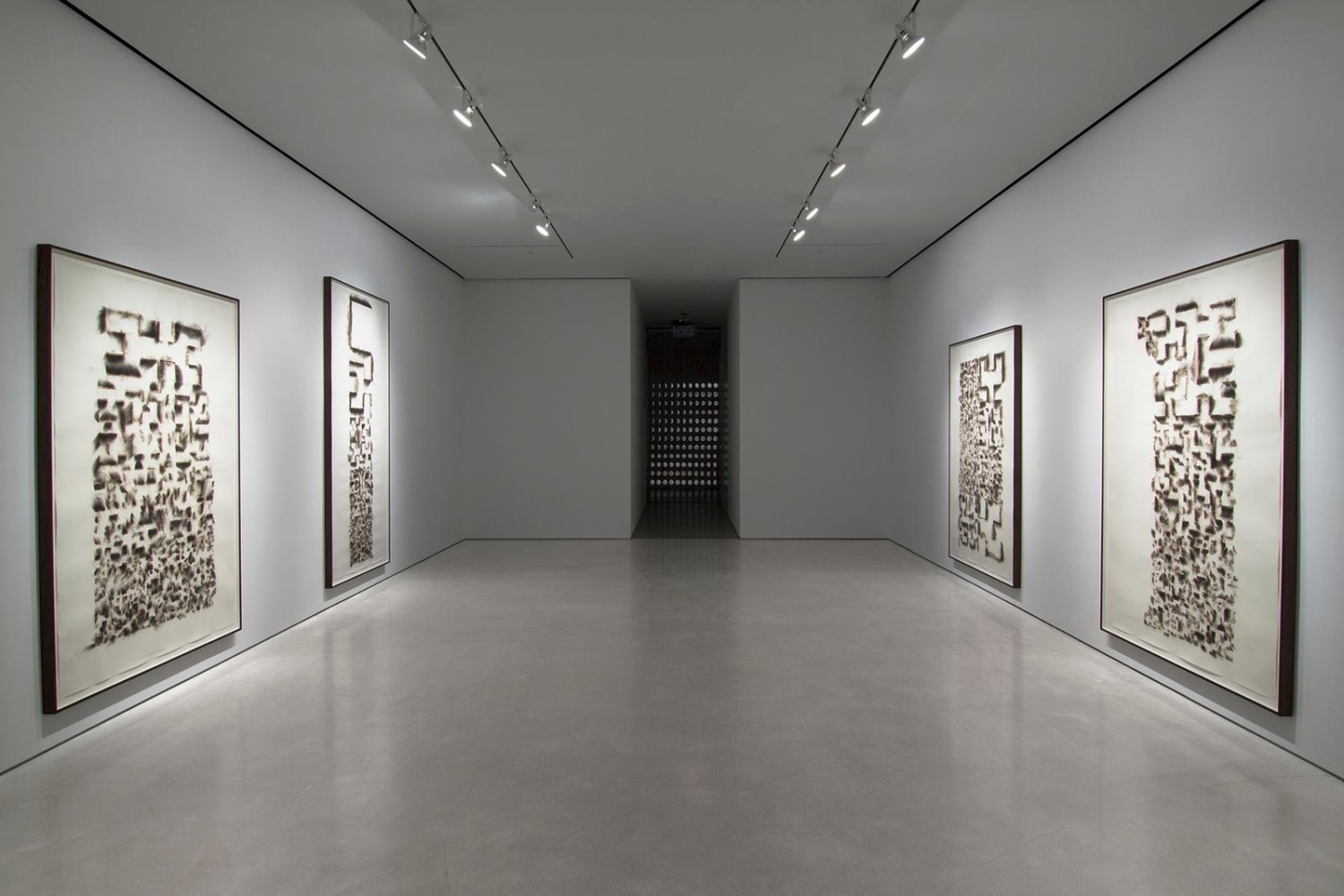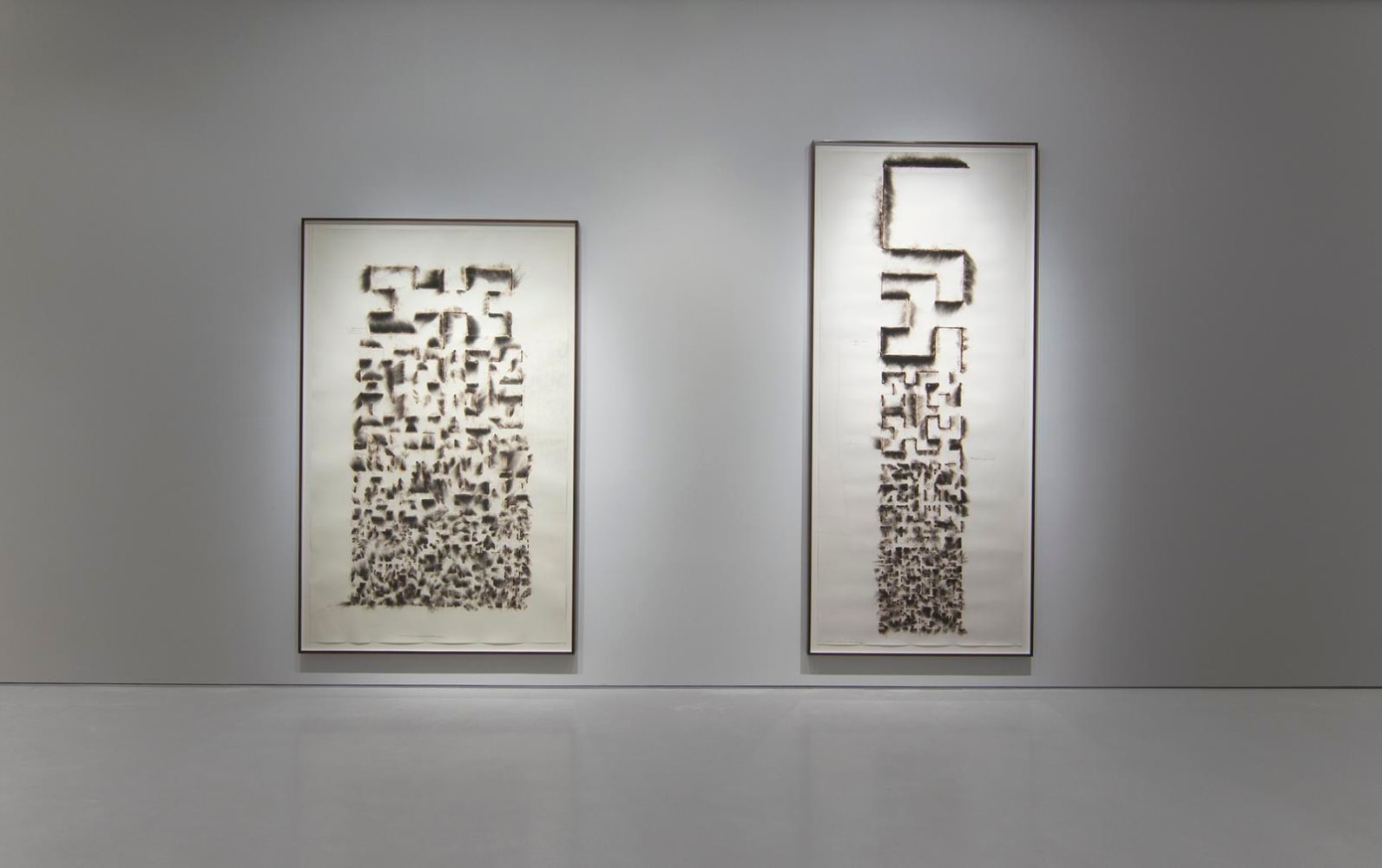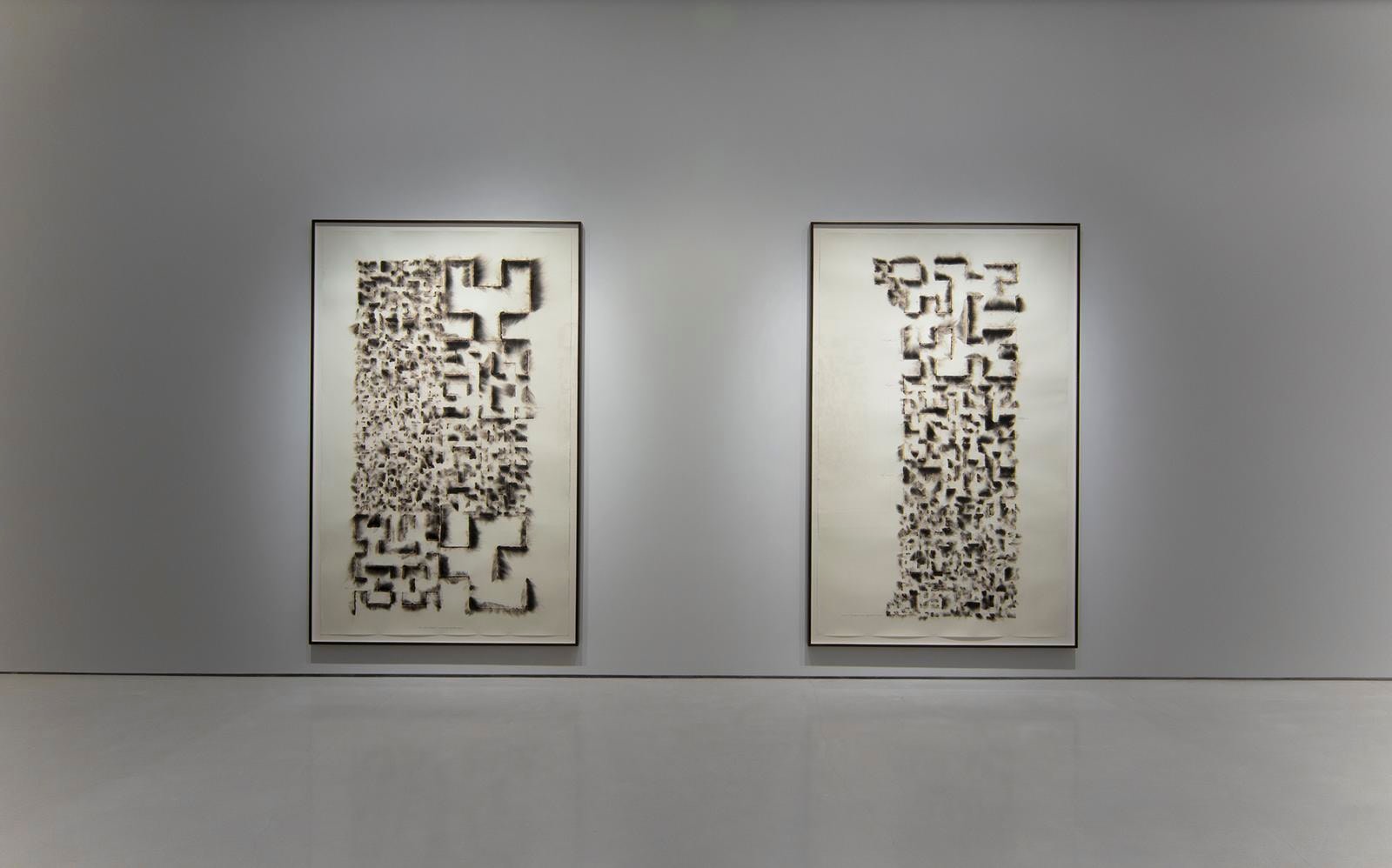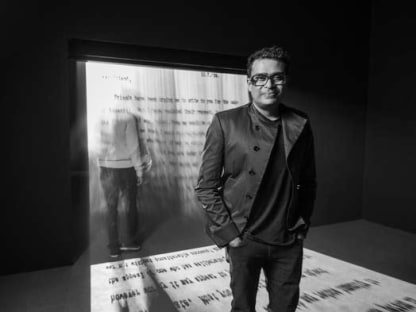
Jitish Kallat
Decimal Point
Sperone Westwater, New York
26 April – 16 June 2018
Press Release
Following his critically acclaimed mid-career survey exhibition, at the National Gallery of Modern Art (New Delhi) and his one-person exhibition titled Covering Letter at the Philadelphia Museum of Art in 2017, Jitish Kallat’s debut solo exhibition at Sperone Westwater can be described as a culmination of several strands of inquiry developed over the last few years. Titled Decimal Point, the exhibition delves into ideas of time, sustenance, sleep, vision and perception along with a compelling interplay of scales and proximities, and evocations of the celestial and the cosmological; preoccupations that have recurred across his wide-ranging work.
At the center of the exhibition is a large suite of photographic works titled Sightings that appear like telescopic snapshots of distant galaxies or faraway supernova explosions in an early universe. It is only on closer viewing that one recognizes each lenticular photo as a double image bearing a close detail of a fruit (a plum, a banana or a fig) and its chromatic inverse, carrying a forensic image of the cosmos with the dispersed constellations manifest on its skin. For Kallat the fruit becomes a small doorway to deliberate upon its very energy as an incarnation of this vital stellar power temporarily posing as a fruit, contemplating the macro as manifesting within the micro.
Also part of the exhibition are meditative, elemental works on paper titled Wind Study - Hilbert Curve. The works derive their form through carefully plotted arrangements of various orders of Hilbert Curves, which are continuous fractal space-filling curves, first described by the German mathematician David Hilbert in 1891. Taking portions of the infinite dimensional space known as Hilbert Space as his template, Kallat ritualistically overlays it one small line at a time, setting aflame each one with an inflammable liquid. The movement of wind at the moment of combustion directs the emergent fumes to leave their marks on the surface of the paper, registering invisible atmospheric flows. Kallat describes the drawings as “transcripts derived by eavesdropping on the silent conversation between wind and fire”.
The intricately detailed sculpture titled Covariance (Sacred Geometry) would, from a distance, resemble a rock, an anthill, or a fallen meteorite. Carved on its surface are a number of small eyes modeled on various species, from mammals and birds to reptiles and fish that appear like ancient fossils transforming the sculpture into a mysterious, sentient being. These painstakingly rendered biomorphic forms are imbued with many symbolic dimensions as each of the species look out at the world with its own peculiar type of sight and visual perception, holding viewers in a vigilant, thought provoking gaze.
The sculptural installation titled The Infinite Episode- 2 is an assembly of ten sleeping species; a cosmic dormitory wherein they surrender their bodily scale in a state of sleep. Through a measured order of form, this meditative work deploys elemental geometry and scale to provoke deliberations on coexistence, hierarchy and inequity alongside deeper philosophical reflections on ideas of time, consciousness and infinity. The single-channel video titled The Eternal Gradient connects notions of the body, sustenance, the astral and the sky, as 365 rotis (breads) morph with the waxing and waning images of the moon as if aeons of time were passing through an ever-changing annual lunar almanac.
Kallat’s Rain Study (the hour of the day of the month of the season), much like his elemental suite of Wind Studies, participates in the near currents of the atmospheric to summon images that invoke the astronomical. During rain-showers, with the drawing paper held out to the sky Kallat steps outdoors. The drawing thus becomes a rainwater receptacle with constellations of descending raindrops settling on the paper. This short duration of time, measured through the artist’s ‘breath cycles’ are marked as BC on the drawings. Once overlaid with a spray of dark pigment and wiped dry, the resultant image invokes galaxy clusters or stellar maps of the distant universe.
Biography:
Jitish Kallat (born in 1974, Mumbai) lives and works in Mumbai. Kallat’s work over the last two-decades reveals his continued engagement with the ideas of time, sustenance, recursion and historical recall, often interlacing the dense cosmopolis and the distant cosmos. His oeuvre traverses varying focal lengths and time-scales, from a close-up of the skin of a fruit to an expansive voyage into intergalactic vistas. While some works meditate on the transient present, others invoke the past through citations of momentous historical utterances. Frequently shifting orders of magnitude, Kallat’s works can be said to move interchangeably between meditations on the self, the city-street, the nation and the cosmic horizon, viewing the ephemeral within the context of the perpetual, the everyday in juxtaposition with the historical, and the microscopic alongside the telescopic.
Kallat’s work has been exhibited widely across the world. Recent solo exhibitions include a mid-career survey exhibition of his work titled Here After Here, curated by Catherine David, at National Gallery of Modern Art, New Delhi (2017) and Covering Letter at the Philadelphia Museum of Art (2016). Other key institutional solo exhibitions include CSMVS Museum, Mumbai (2016); Art Gallery of New South Wales, Sydney (2015); San Jose Museum of Art (2013); the Ian Potter Museum of Art, Melbourne (2012); Bhau Daji Lad Museum, Mumbai (2011); and Art Institute of Chicago (2010), amongst others.
His work has also been included in numerous group exhibitions at venues including Tate Modern, London (2001); ZKM Museum, Karlsruhe (2007); Art Gallery of Ontario, Toronto (2007); Martin Gropius Bau, Berlin (2008); Mori Art Museum, Tokyo (2008); Jean Tinguely Museum, Basel (2011); and the Museum of Contemporary Art Australia, Sydney (2016). He has participated in a number of international biennale exhibitions including the Havana Biennale (2000) and the Gwangju Biennale (2006), amongst several others.
Jitish Kallat was the curator and artistic director of the Kochi-Muziris Biennale (2014).
